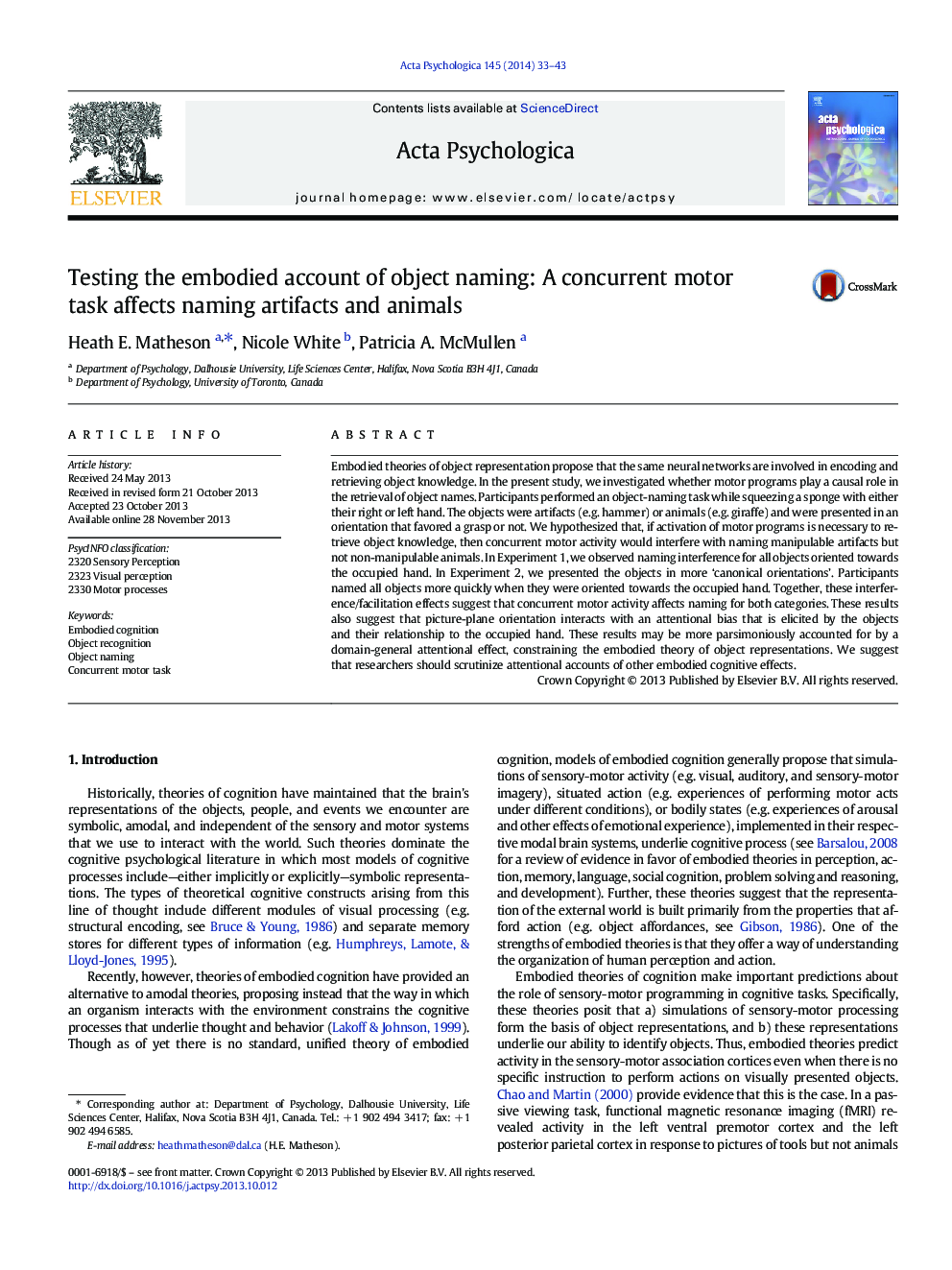| کد مقاله | کد نشریه | سال انتشار | مقاله انگلیسی | نسخه تمام متن |
|---|---|---|---|---|
| 919843 | 1473613 | 2014 | 11 صفحه PDF | دانلود رایگان |
• Embodied theories of object recognition predict a causal role of motor simulation in object naming.
• Participants completed an object naming task and a concurrent motor task.
• Motor task interfered (Exp1) and facilitated (Exp2) naming artifacts and animals.
• The effects of the concurrent motor task do not support embodied predictions.
Embodied theories of object representation propose that the same neural networks are involved in encoding and retrieving object knowledge. In the present study, we investigated whether motor programs play a causal role in the retrieval of object names. Participants performed an object-naming task while squeezing a sponge with either their right or left hand. The objects were artifacts (e.g. hammer) or animals (e.g. giraffe) and were presented in an orientation that favored a grasp or not. We hypothesized that, if activation of motor programs is necessary to retrieve object knowledge, then concurrent motor activity would interfere with naming manipulable artifacts but not non-manipulable animals. In Experiment 1, we observed naming interference for all objects oriented towards the occupied hand. In Experiment 2, we presented the objects in more ‘canonical orientations’. Participants named all objects more quickly when they were oriented towards the occupied hand. Together, these interference/facilitation effects suggest that concurrent motor activity affects naming for both categories. These results also suggest that picture-plane orientation interacts with an attentional bias that is elicited by the objects and their relationship to the occupied hand. These results may be more parsimoniously accounted for by a domain-general attentional effect, constraining the embodied theory of object representations. We suggest that researchers should scrutinize attentional accounts of other embodied cognitive effects.
Journal: Acta Psychologica - Volume 145, January 2014, Pages 33–43
